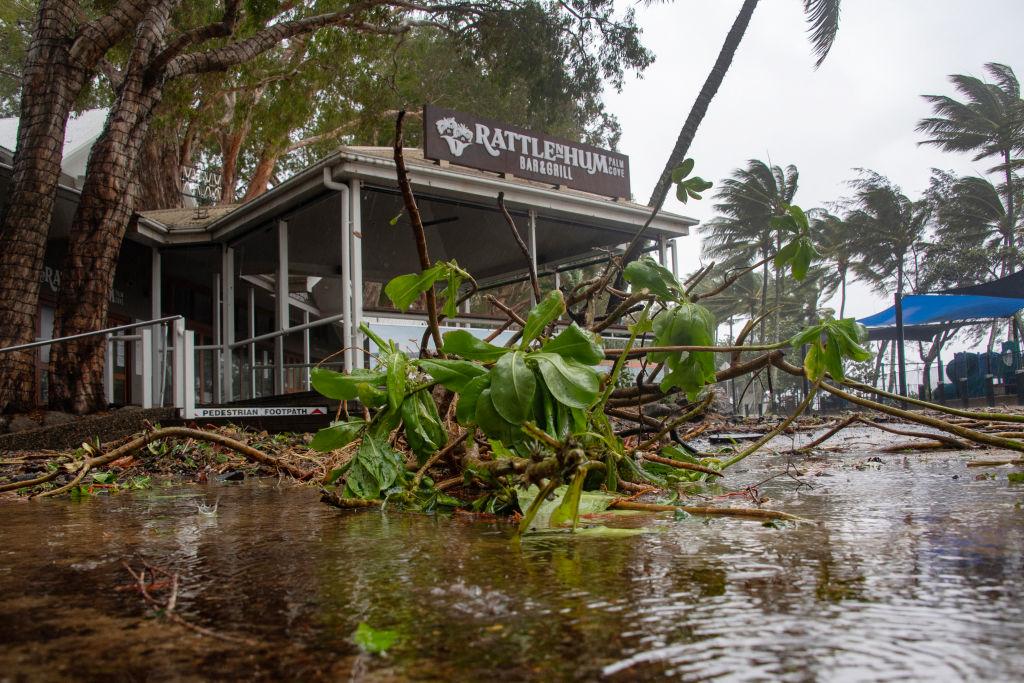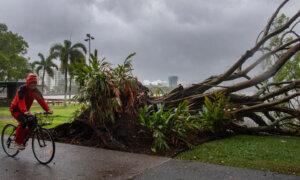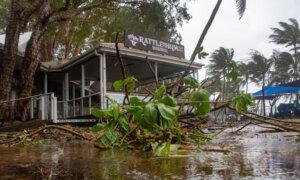The evacuation of a community escaping floodwaters in far north Queensland continues as authorities switch from response to recovery after days of record rainfall and damaging winds.
Some areas of far north Queensland have had 2000 millimetres of rain during the past seven days as ex-tropical cyclone Jasper left residents stranded.
Cooktown, north of Cairns, is taking residents from the nearby Aboriginal community of Wujal Wujal despite being low on supplies.
The Australian Defence Force has sent two Chinook helicopters from Townsville to help evacuate stranded residents, some of whom were stuck on rooftops before getting to higher ground on Dec. 18.
It is hoped 120 people can be evacuated on Dec. 19 with operations expected to continue into Dec. 20 if necessary, Deputy Commissioner Shane Chelepy said.
Early damage assessments indicate one home in Wujal Wujal has been destroyed, 15 have severe damage and 50 are moderately damaged, Queensland Premier Steven Miles said on Dec. 19.
Authorities have concerns for an 85-year-old man missing from Degarra since Dec. 18 and extra police have joined a search.
The federal government has triggered financial support payments for affected communities from Dec. 20.
People who live in Cairns, the Cassowary Coast, Cook, Douglas, Hope Vale, Mareeba, the Tablelands, Wujal Wujal and Yarraabah local government areas can apply for a one-off payment of $1000 per eligible adult and $400 per eligible child who have suffered a significant loss as a result of the floods.
“What we’re doing is working as close as we as we can with the Miles government, with local government and all of the authorities to make sure that we make this recovery as smooth as possible,” he said.
Mr. Albanese and Mr. Miles will travel to Cairns on Dec. 21.
Decreasing rain is helping to ease flooding across north tropical coast communities, while warnings have been finalised for the Barron River which had affected services at Cairns Airport, which was set to reopen on Dec. 19.
No further rainfall of significance is forecast across the catchment over the next few days, but bureau forecaster Laura Boekel said people should monitor flood and river warnings.
Several thousand homes are still without power as energy crews from Ergon start air patrols to assess grid damage.
Ergon said more than 2000 homes in Cairns and on the Cassowary coast had power restored but floodwaters would need to recede further before crews could do a thorough damage assessment and tackle extensive repairs.
The Cooktown region’s mayor said he would be scrambling to boost dwindling food and supplies before the arrival of 300 evacuees from Wujal Wujal.
Peter Scott said the town had enough food for another three days and water restrictions remained in place because of flooding at a water treatment plant.
Mr. Scott insisted the town could still host the evacuees, with the Cooktown PCYC equipped to accommodate up to 1000 people.
“Wujal Wujal have copped it very badly,” he said.
“Some of those poor people have been on the roof of their houses for two or three nights with no power, no communication, no food probably.”
Flood-affected residents have been warned about diseases from polluted water.
There was a greater risk for life-threatening infectious diseases such as Melioidosis when there were floods, Tropical Public Health Services director Dr Richard Gair said.
“This organism usually lives deep in the soil but comes to the surface when the soil is disturbed by heavy rainfall and flooding,” he said.







